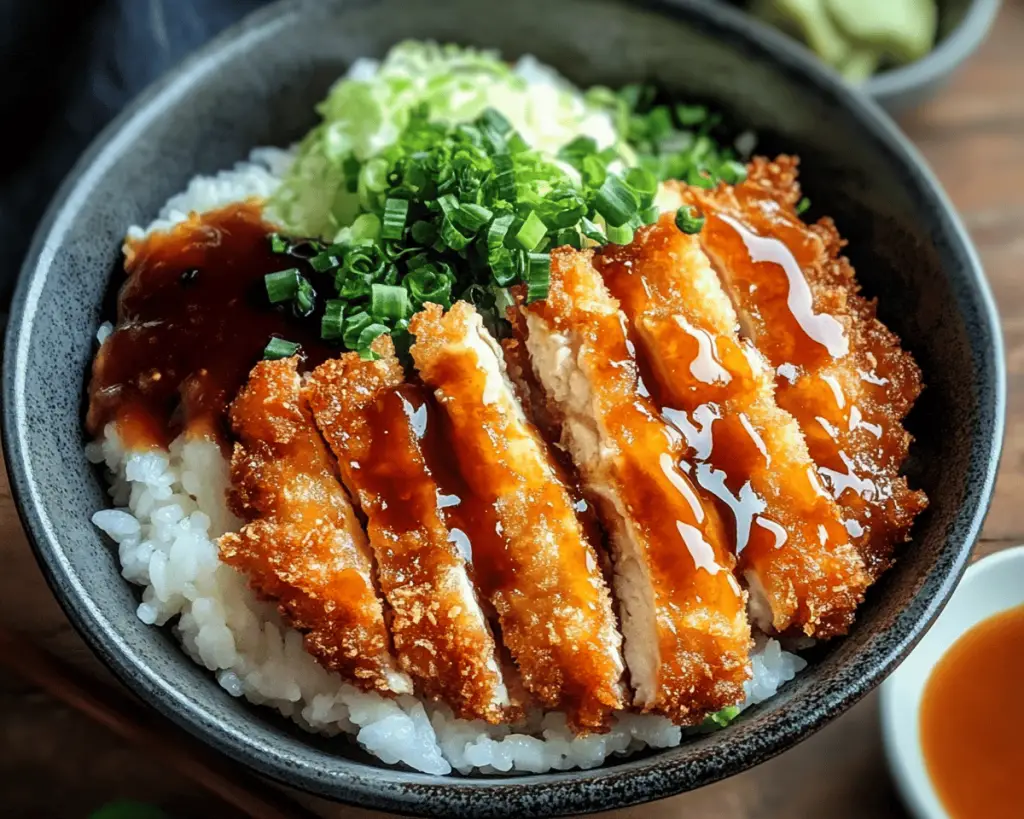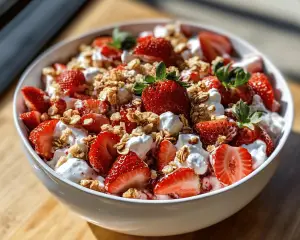I remember the first time I dipped a piece of fried pork into tonkatsu sauce; it was a revelation, an epiphany that transformed a simple meal into a culinary experience. Somehow, the golden-brown, crispy exterior of the pork cutlet, when paired with that sweet-and-savory sauce, had the power to evoke emotions and awaken memories hidden deep within me. It all began on a rainy Saturday afternoon in the heart of Tokyo, when my friend Yuki invited me over for lunch.
Yuki had become my guide to the nuances of Japanese cuisine, introducing me to dishes that radiated warmth and comfort. As the rain pattered gently against the window, we found ourselves in her cozy kitchen, an aromatic haven filled with enticing scents. She had a charming way of cooking, making everything feel effortless. She uttered words of wisdom in between laughter and instruction, making each step feel like a dance. It was here that I first witnessed the art of making katsu—how she delicately pounded the pork, how she expertly coated it with panko breadcrumbs, and how she reveled in the sizzle of the meat meeting hot oil.
Katsu bowls burgeoned with flavors and textures, while memories history-laden with family and tradition danced through the air. I absorbed each detail, marveling at the simplicity coupled with the boldness of flavors. Fast forward to today, and that same feeling of warmth travels with me. The recipe for Japanese Katsu Bowls with Tonkatsu Sauce has slowly become a staple in my own kitchen—a comforting embrace during hectic weeks, a source of joy on intimate evenings, and even the silent witness to quiet moments of reflection.
Inside the Ingredients of Japanese Katsu Bowls with Tonkatsu Sauce
Let’s take an intimate stroll through the ingredients—each one pulsates with its own personality and narrative.
Pork Loin: This is where it all begins. The choice of pork is fundamental. I have toyed with different cuts, but the pork loin, tender and lean, strikes the perfect balance between flavor and texture. Each bite should evoke joy. When seared, it takes on a succulent quality that coats your palate, leaving you yearning for more.
Panko Breadcrumbs: Light and airy, panko breadcrumbs have a knack for creating that unforgettable crunch. I once made the catastrophic mistake of using regular breadcrumbs; a soggy, lifeless attempt at katsu that lacked any soul. Panko, however, is a game changer. The Japanese breadcrumbs are coarser than their counterparts and beautifully absorb oil, making the cutlet crispier and lighter. Panko breadcrumbs transform the katsu from a simple fried piece of meat into a symphony of texture that complements the softness of the loin.
Eggs: Whisked and ready to embrace the panko, eggs act as the binding agent that holds the crumb coating onto the pork. I find it oddly comforting to watch as the egg adheres to the meat, creating a beautiful sticky surface that promises crunch when it meets hot oil. It’s a gentle reminder that even the simplest of ingredients can act as the foundational glue of a dish.
All-Purpose Flour: This ingredient often slips into the shadows of more flamboyant items, but its role is crucial. A dusting of flour provides a dry surface for the egg to cling to, helping the breadcrumbs affix to the meat. My friend Yuki swears by a light sprinkle of salt mixed into the flour, which adds that extra dimension of flavor—something I always carry over since then.
Vegetable Oil: Ah, the liquid gold that transforms this dish. My preference leans toward vegetable oil, as its neutral flavor allows the cutlet’s natural sweetness to shine. Heat it in a heavy skillet until it shimmers—a sound that draws you in, encouraging you to cinnamon roll around the kitchen as the aroma envelops you, guiding the emotions tied to comfort and home.
White Rice: The companion to all things katsu, rice has a quiet yet powerful presence. There’s something enchanting about the way perfectly cooked rice cradles the crispy cutlet and absorbs the luscious sauce. I often find solace in making rice—its simplicity manifests a sense of calm and rootedness as I prepare it to serve as the fundamental base of the bowl.
Daikon Radish: For that fresh twist, I always add grated daikon radish. A humble ingredient, it adds crunch and a peppery bite that cuts through the richness of the pork beautifully. I was skeptical the first time I tried it—it seemed almost too simple. However, its brightness has become almost essential, enhancing the overall balance of the dish.
Tonkatsu Sauce: This is the magic elixir that breathes life into the katsu. Comprised of a blend of Worcestershire sauce, soy sauce, ketchup, and a few other ingredients, it presents a beautiful dance of sweet and tangy notes. I fondly recall the first time I made my own batch—playing around with the quantities until I discovered the balance that mirrored Yuki’s. Crafting this sauce is a slow heady affair, almost meditative, that allows me to pour a piece of my heart into each drop.
How Japanese Katsu Bowls with Tonkatsu Sauce Fits Into a Balanced Life
As I reflect on life’s ebbs and flows, Japanese katsu bowls serve as a gentle reminder of balance. Food is a tapestry woven from enjoyment and sustenance. In our modern world, there’s often an overwhelming pressure to choose one over the other. But this recipe invites you to strike that harmonious chord where joy and health coexist, where indulgent and nutritious dance together on the same plate.
Nutritionally, I hold the belief that meals should be both nourishing and joyous. While katsu may not be the poster child of a low-calorie diet, there’s a beauty to savoring the richness of flavors without guilt. A balance of protein from the pork, carbohydrates from the rice, and the freshness from the daikon provides a holistic meal. In many ways, this dish got me through periods of stress, its comforting embrace reminding me that nourishment doesn’t have to come at the expense of delight.
I have navigated my share of dietary adaptations—gluten-free panko and cauliflower rice became my friends during times of experimentation. I’ve played with vegan cuts using breaded tofu as a substitute, which was surprisingly delightful—a testament to the flexibility of the dish. The key is to focus on what feels right for you and to embrace that culinary creativity without shame.
Ultimately, katsu bows leave plenty of room for interpretation. “This isn’t just food; it’s a celebration,” I once told a friend. It’s a dance of flavors, a hug from the inside, embodying both the simple joy of cooking and the depth of those meaningful moments.
What You’ll Need
– Pork Loin: 1 pound
– All-Purpose Flour: 1 cup
– Eggs: 2, beaten
– Panko Breadcrumbs: 2 cups
– Vegetable Oil: For frying
– White Rice: 2 cups, cooked
– Daikon Radish: ½ cup, grated
– Tonkatsu Sauce: ½ cup (store-bought or homemade)
*Servings: 4*
Preparing Japanese Katsu Bowls with Tonkatsu Sauce Step by Step
Here’s where the magic happens. The world of katsu beckons.
First, get your kitchen ready. Lay everything out as this dish is all about rhythm. Start by taking your choice of pork loin and placing it on a cutting board. Gently pound it with a meat mallet or the bottom of a heavy pan, bringing the piece to an even thickness. Take your time and enjoy this part; it’s a bit therapeutic, transforming tough meat into tender goodness.
Once you’ve achieved a beautiful, thin cut, season the pork with a pinch of salt and black pepper. Next, create an assembly line for the coating: one plate for flour, another for the beaten eggs, and finally one for the panko breadcrumbs.
Now, dredge each piece of pork in flour, making sure it’s lightly coated; it’s important—don’t rush through this part. Dip it into the egg and finally into panko, pressing gently to ensure it adheres. Picture yourself cosplaying as a master chef, relishing in the process.
With all your pieces ready, heat the vegetable oil in a large skillet over medium heat until it shimmers. Gently place a piece of pork in the oil, being careful not to overcrowd the pan. The glorious sizzle should make your heart flutter a little. Let it fry for about 4-5 minutes on each side until golden brown and ultra-crispy. Oh, take a moment to enjoy that smell—it’s everything.
Once the cutlets are done, place them on a plate lined with paper towels to absorb any excess oil. There’s a good chance you might want to sneak a taste; I always do.
While the pork rests, let’s prepare the rice. Fluff it up, adding a pinch of salt if desired, and arrange it neatly in bowls. Slice the beautifully cooked pork into strips, placing them atop the rice. You can feel the satisfaction coursing through as you see your creation come together.
Now, it’s time for the fun part—drizzle the tonkatsu sauce generously over the crispy cutlet, allowing it to cascade down the sides. Finish with a shower of freshly grated daikon radish for a refreshing crunch.
Use this moment to slow down and celebrate all that has been created. Remember that this journey is about more than just the meal; it’s a testament to connections and joy.
Lessons from My Kitchen
You know, there have been trials along the way, moments of both hilarity and learning. There was that infamous occasion where I decided to get creative and paired the katsu with an overly ambitious spicy mango salsa. My tastebuds simply couldn’t understand the clash of flavors. It was a misstep, a reminder that while it’s essential to explore, sticking to well-loved traditions once in a while can also lead to greatness.
Speaking of greatness, the dish evolved for me when I discovered how to make my own tonkatsu sauce. I fondly remember that evening, ingredients sprawled across my countertop. It became more than just sauce; it transformed into a labor of love as I whisked and tasted—each combination unlocking another layer of nostalgia.
Over the years, I have played around with different proteins. Chicken katsu and even eggplant katsu made their way into my bowls on adventurous days. Each time, I embrace the principles Yuki instilled in me: keep it joyful, keep it real, and don’t forget the daikon.
Through it all, one idea has always surfaced: food has immense power. It shapes our relationships, it fosters memories, and it has the ability to bridge cultures. So whether it’s a big family dinner or a simple cozy night alone, the kitchen reminds us to seek out moments for joy, connection, and comfort.
(Closing Thought)
As I stand in my kitchen even now, my heart brims with warmth, connected to every moment spent crafting this dish. The Japanese Katsu Bowl with Tonkatsu Sauce has become so much more than just a delicious meal; it holds echoes of laughter, whispers of love, and lessons of perseverance.
In your hands, may this recipe transform into your own tradition—bring whatever twists your heart desires. Trust in the process, enjoy the smells and sounds, and remember that this dish is not only about the food itself, but the memories woven ever so intimately with it. I invite you to create, share, and savor your journey too, knowing that each bowl reflects your unique story.



